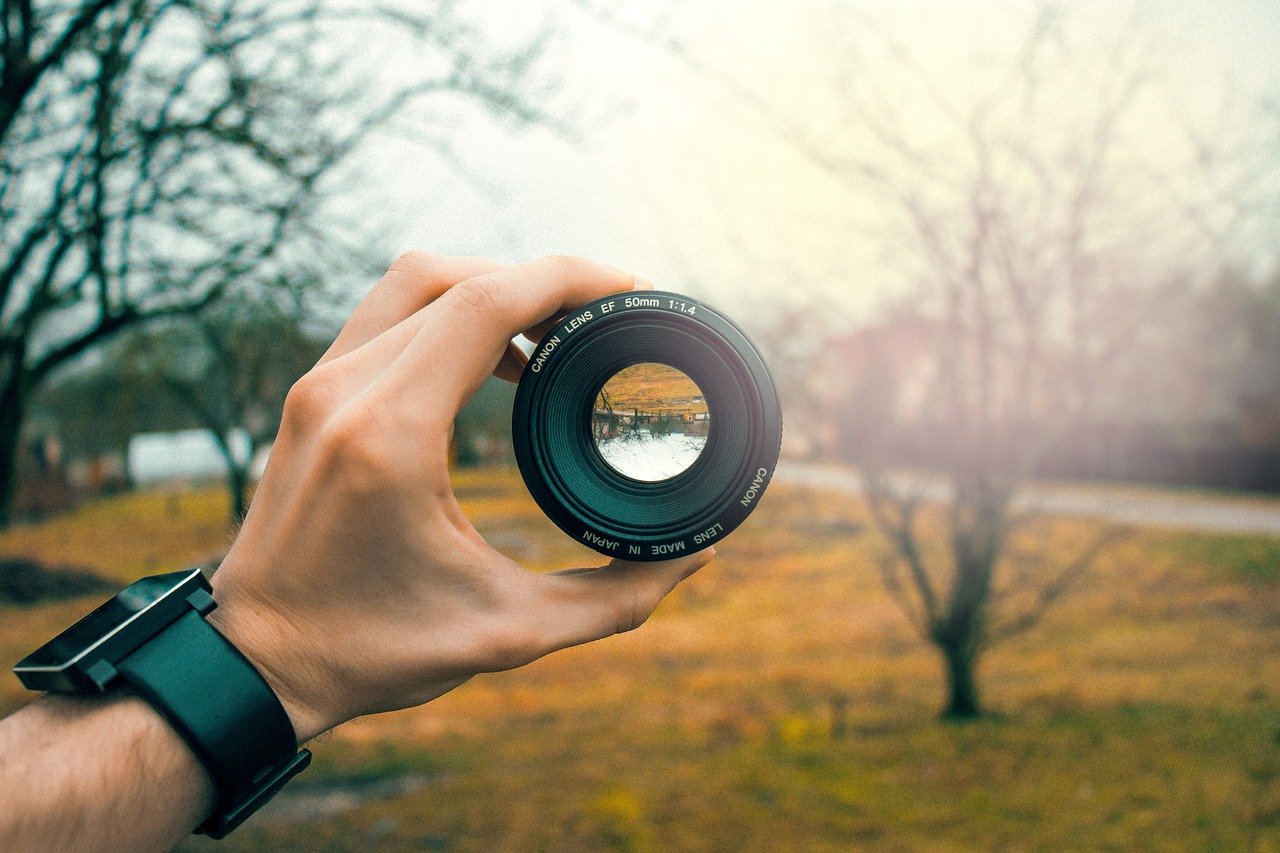What Is Focal Length in Photography?
Estimated reading time: 9 minutes
Table of contents
The concept of focal length is misunderstood by many photographers. Contrary to popular belief, a lens’ focal length is not its physical dimension, and it has little bearing on its overall size. So, what exactly is it? In this article, I’ll answer that question and explain how to choose the right focal length for your photography style.
Definition of Focal Length
The focal length of a lens is an optical property of the lens, without getting into a detailed physics discussion. It measures the distance between the optical center of the lens and the camera’s sensor in millimeters (or film plane). It’s determined by focusing the camera on infinity. Lenses are identified by their focal length, which can be found on the barrel of the lens. A 50 mm lens, for example, has a focal length of 50 mm.
I mentioned the “optical center” of a lens in the definition of focal length. You might be wondering what this is all about. A camera’s lens, on the other hand, is not made of a single piece of glass. Rather, it’s a mix of lens elements and groups of elements. These combinations aid in the focusing of light and the reduction of distortions. The optical center of the lens is the point at which all of the light rays converge to form a sharp image.
The focal length of a lens is a property of the lens, not the camera. A 50 mm lens is a 50 mm lens, regardless of whether it is mounted on a full-frame, cropped sensor, or medium format camera. However, the sensor size does affect the field of view of a lens/camera combination, but more on that in a moment.
The Important Stuff
While the definition of focal length may be important to some people, it is not something you should remember as a photographer. What matters most is that we understand what focal length means. The angle of view of a lens is described by its focal length. That is, how much of the scene in front of us is captured by the lens. In addition, the size of the subjects within the frame. The narrower the angle of view of a lens, the longer the focal length. Long focal length lenses make subjects appear larger than they do when viewed with our eyes. Short focal length lenses, on the other hand, cover a much wider field of view. As a result, elements in the frame appear much smaller than they do to our eyes.
Take a look at this rough illustration. Nikon claims that its 500mm f/5.6 lens has a 5o angle of view, while its 50mm f/1.4 lens has a 46o angle of view. Finally, the camera’s 20 mm f/1.8 lens has a 94o field of view. The longer 500 mm lens, as you can see, captures a much thinner slice of the scene. As a result, the shot only captures a portion of a single boat. The 50 mm lens, on the other hand, has a wider field of view. Standing in the same spot, you can get a much wider view of the scene, including several boats and more distant rocks. The 20 mm lens, on the other hand, allows you to capture the entire scene in a single shot.
During a recent trip to Lake Tahoe, I happened upon two guys rock climbing while hiking. Despite the fact that I was not using a tripod, I was seated on the rocks and took all four shots from the same location. As I zoom in on the climber, notice how my images narrow in on the scene. The men are barely visible at a 25 mm focal length. Alternatively, at 140 mm, you can see the climber’s expression. He did, however, manage to climb another 3 meters up the face before losing his grip, slipping off the rocks, and safely repelled back to the ground!
Field of View and Equivalent Focal Length
The terms “field of view” and “angle of view” are frequently used interchangeably. However, as previously stated, the angle of view is an optical property of the lens. It does not change regardless of the type of camera used. The lens/camera combination, on the other hand, determines the field of view. The field of view is determined not only by the focal length of the lens but also by the size of the camera’s sensor.
A full-frame camera has a sensor the size of a 35 mm film negative (36 mm x 24 mm). However, depending on the manufacturer and camera model, digital cameras today come in a wide range of sensor sizes. Cropped sensors are those that are smaller than full-frame.
This term derives from the fact that these smaller sensors see less of a scene, similar to how cropping an image works.
The term “effective focal length” (also known as equivalent 35 mm focal length) refers to what a lens captures on a 35 mm sensor. Because most people, at least those with a few grey hairs, are used to working with 35 mm film cameras, the full-frame format was adopted as the standard. Equivalent focal length refers to the focal length of a lens required on a full-frame camera to capture the same field of view as a given lens on a cropped sensor camera.
This is where crop factors enter the picture. The equivalent focal length is calculated by multiplying the focal length of the lens by the crop factor of the non-full frame camera. Nikon’s DX cameras feature a crop factor of 1.5. The crop factor on Canon’s EF-S cameras is 1.6. Furthermore, micro four-thirds cameras have a crop factor of 2.0, whereas Sony and Panasonic’s 1′′ sensors have a crop factor of 2.7.
This image was captured on my full-frame Nikon D800 with a 24-70 mm f/2.8 lens at 44 mm. If I used the same zoom on my Nikon D500 (cropped sensor), it would still be a 24-70 mm lens at 44 mm. However, due to the cropped sensor camera’s reduced field of view, the same area would not be visible. In this case, I would only capture what is highlighted in red. On the D500, my effective focal length would be 44 mm x 1.5, or 66 mm. In other words, if I wanted to capture what is highlighted in red on my D800, I would need to use a lens with a focal length of 66 mm. Of course, I could use my 24-70 mm lens to zoom from 44 to 66 mm.
A few years ago, Nasim wrote an excellent article on Equivalent Focal Length and Field of View. Check out his article for a much more detailed explanation.
Classifications of Focal Lengths
Depending on their equivalent focal length, camera lenses are classified into five descriptive categories. In full-frame terms, ultra-wide-angle lenses have a focal length of less than 24 mm. They capture a wide range of perspectives. As a result, they frequently present a distorted view of the world. They are enjoyable to use lenses with a short minimum focusing distance and a large depth of field. These lenses are well worth having in your bag if you photograph interiors.
Wide-angle lenses have equivalent focal lengths ranging from 24 to 35 mm. These lenses still provide a wide field of view and are frequently used by landscape and architectural photographers. When shooting with a wide lens, try to include some foreground interest. This will give your photos a sense of scale and will aid in drawing viewers into your image. Because these lenses have such large depths of field, it is simple to sharply focus on both close and far objects.
Standard lenses have focal lengths ranging from 35 mm to 70 mm. They capture the world in a manner that is very similar to how our eyes see it. They produce minimal distortion and are therefore popular among portrait photographers. Another advantage of lenses in this focal range is their ability to isolate a subject from its surroundings by employing much shallower depths of field than wide-angle lenses.
Telephoto lenses have focal lengths ranging from 70 mm to 300 mm. Wildlife photographers frequently use them to get closer to their subjects while remaining unseen. Even at small apertures, these lenses have shallow depths of field, so achieving sharp focus is critical.
The focal lengths of super-telephoto lenses exceed 300 mm. They are frequently used to photograph birds and other small distant subjects. These lenses can be quite large and heavy, necessitating the use of a tripod to support them. They’re also quite pricey! At the time of writing, Nikon’s AF-S NIKKOR 800mm f/5.6E FL ED VR lens costs a whopping $16,300! Fortunately, there are some much less expensive options available now that allow photographers with average budgets to get into bird photography!
All of the numbers I just mentioned are, once again, in full-frame terms.If you have a crop-sensor camera, divide these numbers by 1.5, 2, or whatever your crop factor is to get your equivalent focal lengths.
Zooms vs Prime?
The focal length of a prime lens is fixed. In contrast, a zoom lens has a variable focal length. Zoom lens ranges that are popular include 16-35 mm, 24-70 mm, and 70-200 mm. A lens that covers both the wide and telephoto ranges, such as an 18-200 mm lens, is ideal for travel. The advantage here is that you won’t have to carry around a bunch of lenses or switch between lenses to shoot wide vistas and close-ups of architectural details.
However, zooms have one disadvantage: they are not always as optically sharp as prime lenses. Although newer and better technology is closing the gap, it still exists, especially when dealing with superzooms like 18-200 mm lenses. Another disadvantage is that they have smaller maximum apertures than prime lenses. While a high-end zoom lens may have a fixed aperture of f/2.8, primes with similar focal lengths may open up much wider and often let in several more stops of light. Prime lenses may be more desirable in low-light situations as a result of this. See our larger article on the subject for more information on primes versus zooms.
Conclusion
Don’t get hung up on the definition of focal length, or the distinction between an angle of view, a field of view, and a lens’s equivalent focal length. It’s important to remember that lenses with long focal lengths, like a telescope, bring objects closer. Wide-angle lenses, on the other hand, are ideal for capturing large vistas. Opt for a telephoto lens if you need to get closer to your subject than you can physically. If you enjoy shooting landscapes and architecture, make sure you have a wide-angle lens with you. You can’t go wrong with a nifty-fifty in your bag for portraiture or anything else in between.
Note: If you want to make some adjustments to the photo just let me know. I can do it for you at a very low cost. You can hire me to edit your photo.
LATEST POST
- Best AI tools for Facebook Ads
 If you’re seeking to improve your Facebook advertising strategies, Birch or Revealbot, AdEspresso by Hootsuite, and Zalster are exceptional AI tools that enhance efficiency and maximize ad performance.
If you’re seeking to improve your Facebook advertising strategies, Birch or Revealbot, AdEspresso by Hootsuite, and Zalster are exceptional AI tools that enhance efficiency and maximize ad performance. - Photo Editing Mistakes
 Excessive editing, Oversaturating colors, Blurred images, Too much HDR and Overdoing filters and effects are some of the top photo editing mistakes to avoid for crafting stunning pictures.
Excessive editing, Oversaturating colors, Blurred images, Too much HDR and Overdoing filters and effects are some of the top photo editing mistakes to avoid for crafting stunning pictures. - Best AI tools for lead generation
 Explore Customers.ai, Instantly, Seamless.AI, and LeadIQ are some of the best AI tools for lead generation as they provide you with client’s details for closing deals. Uncover its key features, affordable pricing, and customer reviews.
Explore Customers.ai, Instantly, Seamless.AI, and LeadIQ are some of the best AI tools for lead generation as they provide you with client’s details for closing deals. Uncover its key features, affordable pricing, and customer reviews. - Benefits of Digital Business Cards
 What is a digital business card? Discover the benefits of digital business cards and how to create digital business cards suitable to your professional image and networking efforts.
What is a digital business card? Discover the benefits of digital business cards and how to create digital business cards suitable to your professional image and networking efforts. - Best web design companies in Trivandrum
 Rainx LLP, Oregon Technologies, Redwet Solutions, and Globify Digital Solutions are among the best web designing company in Trivandrum, specializing in website development.
Rainx LLP, Oregon Technologies, Redwet Solutions, and Globify Digital Solutions are among the best web designing company in Trivandrum, specializing in website development.







